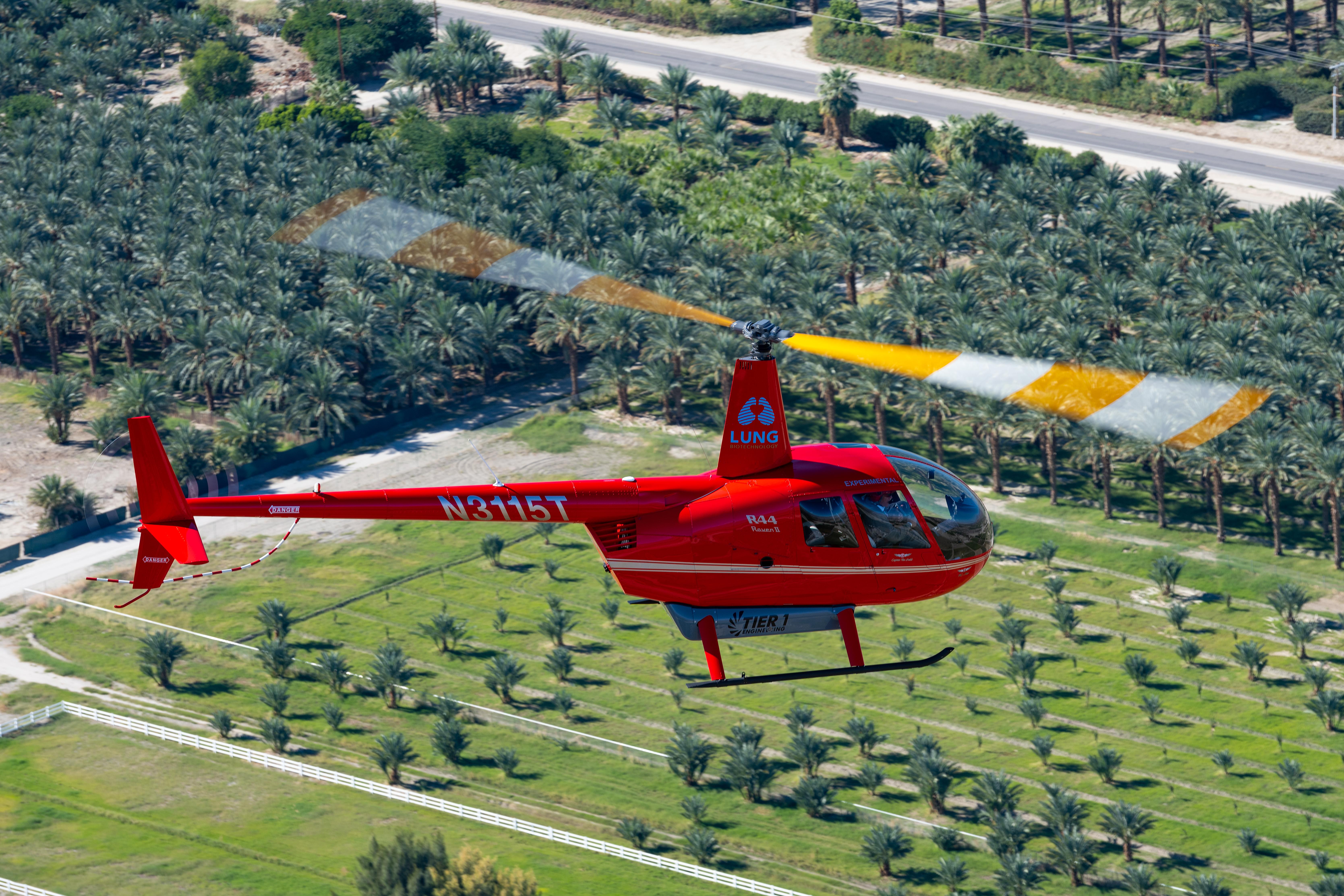
Tier 1’s e-R44 has completed the first flight between two airfields by an electrified helicopter.
A Robinson R44 converted to electrified propulsion by Tier 1 Engineering has completed the first helicopter flight between airfields solely on electric power.
The modified R44 flew from Jacqueline Cochran Regional Airport near Coachella, California, to Palm Springs International Airport on Oct. 29, a flight of 21 nm that equaled the distance flown on the first commercial helicopter flight across the English Channel on Sept. 25, 1947.
“[This] historic flight demonstrates the potential of all-electric rotorcraft,” says Tier 1 President Glen Dromgoole, noting that in other periods of significant advance in aviation “the first aircraft flew short distances, and many people were afraid to ride in the new flying machines.”
Tier 1’s e-R44 is fitted with a MagniX magni350 electric propulsion unit powered by a lithium-ion battery pack mounted under the fuselage. The helicopter uses a quick-swap battery system to enable a return flight without waiting to recharge. The battery pack can be exchanged in 15 min. versus an hour for a full recharge, Tier 1 says.
The modified helicopter was flown by Ric Webb, founder of operator OC Helicopters, and Martine Rothblatt, founder and CEO of United Therapeutics (UT), parent company of Lung Biotechnology, which is working to expand the supply of transplantable organs.
Through Lung Biotechnology, UT is funding development and certification of the e-R44 by Tier 1 to deliver manufactured organs for transplant. “Today’s historic intercity flight demonstrates that many organ transport distances are doable with electric aircraft using today’s technology,” Rothblatt said.
UT plans to use fixed-wing aircraft with either electric propulsion or sustainable aviation fuel to deliver organs over long distances to airports and then use electric helicopters or vertical takeoff and landing (eVTOL) aircraft for the shorter hops from airports to transplant hospitals. The company is also an investor in eVTOL startups EHang and Beta Technologies.
“We are committed to achieving FAA certification of this electric helicopter [the e-R44] and to using newer energy cells to extend our ranges to hundreds of miles in the next few years,” she said.
Rothblatt has described backing Tier 1, EHang and Beta as her “three shots on goal.” Tier 1’s modification of an already certified light helicopter offers the lowest risk, the fastest timescale path to a zero-emission delivery vehicle. EHang is promising autonomous operation with its EH216 air taxi, and Beta has set the goal of achieving a 250-nm range with its Alia winged eVTOL.
The e-R44 adds to a growing list of electric aircraft achievements in 2022. In August, Canada’s Harbour Air Seaplanes completed its first point-to-point test flight in its prototype eBeaver. The modified De Havilland Canada DHC-2 Beaver flew from Vancouver to Victoria on Vancouver Island, a 45-mi., 24-min. flight demonstrating the electrified aircraft’s intended mission.
On Sept. 27, Eviation Aircraft’s prototype 11-seat Alice completed its 8-min. first flight from Moses Lake, Washington, becoming the largest all-electric commercial aircraft to fly so far.
